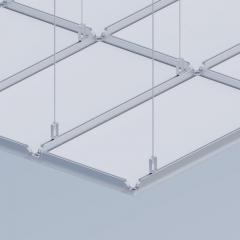
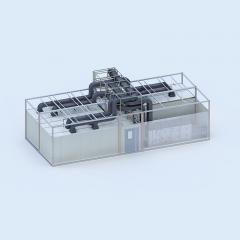
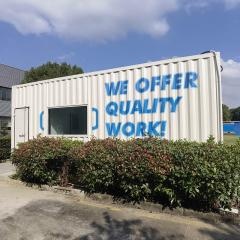
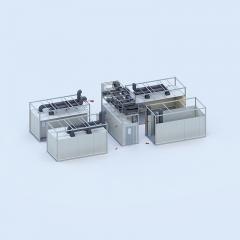
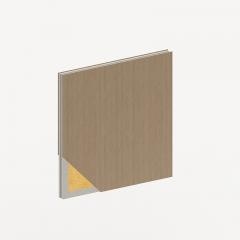
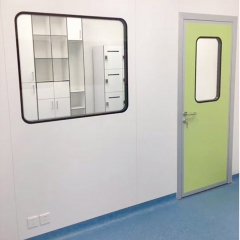
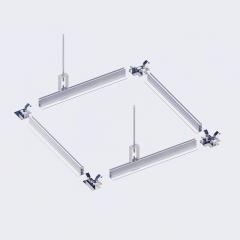
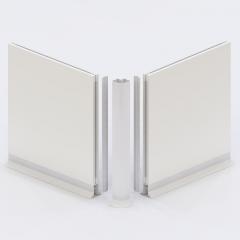
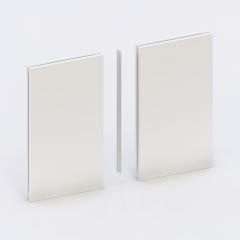
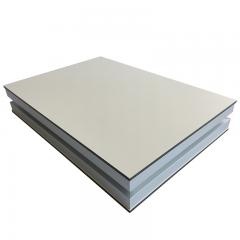
Cleanrooms are specialized environments that require stringent control over contamination levels to ensure the quality and safety of the products or processes taking place within them. One essential aspect of cleanroom design is the ceiling system, which plays a crucial role in maintaining the desired cleanliness standards. In this article, we will explore cleanroom ceilings and the various components that make them reliable and efficient. Cleanrooms False Ceiling: Creating a Controlled Environment Cleanrooms are equipped with false ceilings, also known as dropped ceilings, which serve multiple purposes. One of the primary functions of a cleanroom false ceiling is to create an enclosed space that separates the cleanroom environment from the rest of the building. By effectively sealing off the room, it helps control air circulation, minimize particle infiltration, and maintain the required air pressure differentials. Aluminum Ceilings: The Ideal Choice for Cleanroom Applications When it comes to cleanroom ceilings, aluminum is a popular material choice among manufacturers and designers. Aluminum ceilings offer a unique combination of durability, cleanliness, and aesthetic appeal. They are resistant to corrosion, easy to clean, and have low particle generation properties, making them perfect for cleanroom environments. Aluminium Ceiling Panels: Ensuring Cleanliness and Functionality Aluminium ceiling panels are a key component of cleanroom ceiling systems. These panels are designed to be easily installed and provide a seamless, smooth surface that minimizes the accumulation of dust and other contaminants. Maintaining cleanliness is paramount in cleanrooms, and aluminium ceiling panels deliver on this requirement while offering excellent structural integrity. Cleanroom Ceiling Grid System: A Framework for Innovation A cleanroom ceiling grid system provides the necessary support for the ceiling panels. It is designed to allow for easy installation, maintenance, and flexibility in configuring the cleanroom layout. The grid system ensures that the ceiling panels fit securely, maintaining a consistent appearance while providing accessibility for equipment installation or maintenance. HPL Ceiling Panels: Combining Beauty and Performance HPL (High-Pressure Laminate) ceiling panels are an excellent choice for cleanroom applications. These panels feature a durable surface that is resistant to scratches, chemicals, and moisture. They are available in various finishes and colors, allowing cleanroom designers to create a visually appealing and functional environment. Clean Room Ceiling Systems: Innovation for Controlled Environments Cleanroom ceiling systems are designed to meet the unique challenges of controlled environments. By integrating elements such as cleanrooms false ceilings, aluminum ceilings, aluminium ceiling panels, cleanroom ceiling grid systems, and HPL ceiling panels, manufacturers ensure that cleanroom facilities operate at the highest standa...
Aluminium Ceilings: Creating and Aesthetic Spaces Aluminium ceilings offer a versatile and durable solution for various architectural applications, including cleanrooms. With their outstanding properties and aesthetic appeal, they are widely used in cleanroom environments to ensure optimal functionality and visual appeal. In this article, we will explore the key features and benefits of aluminium ceilings, specifically in the context of cleanroom applications. One essential component of cleanroom design is the cleanroom ceiling grid. This grid system, made from aluminium, forms the backbone of the cleanroom ceilings. It provides structural support and allows for the integration of other cleanroom components, such as lighting fixtures, air vents, and HEPA filters. The cleanroom ceiling grid ensures a seamless and secure installation of these elements, maintaining the integrity and cleanliness of the controlled environment. A popular type of cleanroom ceiling grid is the cleanroom T-grid system. This system utilizes interlocking aluminium T-shaped profiles to create a sturdy and stable grid structure. It offers easy installation and maintenance, allowing for efficient customization and adjustments to accommodate specific cleanroom requirements. The cleanroom T-grid system ensures a precise and consistent alignment of the cleanroom ceiling panels, promoting an orderly and uniform appearance. Another notable innovation in cleanroom ceiling systems is the bottom load ceiling grid. This design allows the cleanroom ceiling panels to be installed from below, eliminating the need for scaffolding or aerial access during installation or maintenance. The bottom load ceiling grid streamlines the process, saving both time and effort while ensuring a safe and efficient working environment. Cleanroom ceiling panels, typically made from aluminium, play a crucial role in maintaining the cleanliness and functionality of cleanroom environments. These panels are designed to be lightweight, yet sturdy, and are available in various sizes and finishes to cater to different cleanroom classifications and design aesthetics. The cleanroom ceiling panels are constructed to be easily cleanable, resistant to pollutants, and capable of withstanding stringent cleanroom protocols. Theroom false ceiling, created using aluminium ceiling panels, enhances the overall aesthetic of cleanroom spaces. By concealing the infrastructure and providing a clean and uniform surface, cleanroom false ceilings contribute to a visually pleasing environment while maintaining the necessary functionality. This is essential in areas where cleanliness and professionalism are of utmost importance. When considering aluminium ceilings for cleanroom applications, it is vital to source them from reputable cleanroom ceiling panel manufacturers. These manufacturers specialize in producing high-quality panels that meet stringent cleanroom standards and regulations. They employ advanced manufacturing techniques ...
Cleanrooms are specialized environments that require stringent control over particulate contamination, temperature, humidity, and other variables. These controlled environments are essential for various industries, including pharmaceuticals, biotechnology, electronics, and healthcare. A key component of cleanroom construction is the installation of high-quality wall panels that meet the rigorous requirements of cleanliness and functionality. When it comes to cleanroom wall panels, choosing the right materials and manufacturers is crucial for achieving optimal performance. One popular choice for cleanroom wall panels is sandwich panels, which consist of a core material sandwiched between two outer layers. These panels offer excellent insulation, strength, and resistance to contaminants, making them ideal for cleanroom applications. Leading sandwich panel manufacturers specialize in producing cleanroom-specific panels designed to deliver exceptional performance. These panels are typically made of high-pressure laminate (HPL), a durable material known for its resistance to chemicals, moisture, and abrasion. HPL cleanroom wall panels provide a smooth, non-porous surface that is easy to clean and maintain, reducing the risk of contamination and facilitating compliance with regulatory standards. Cleanroom wall systems encompass the combination of wall panels, framing, and other related components necessary for constructing cleanroom partitions. These systems are designed to meet the specific requirements of cleanroom environments, such as classification levels, internal pressure differentials, and fire resistance. Cleanroom partition walls effectively separate different areas within the cleanroom, ensuring controlled airflow and preventing cross-contamination. Cleanroom wall partitions play a crucial role in achieving proper environmental control and operational efficiency. These partitions are engineered to provide airtight and seamless connections, minimizing gaps and potential entry points for contaminants. By utilizing cleanroom wall partitions, industries can create separate zones for different activities, such as manufacturing, testing, and packaging, while maintaining the necessary environmental conditions. To ensure the highest quality and performance, it is essential to source cleanroom wall panels from reputable manufacturers. These manufacturers have extensive experience in producing cleanroom-specific products that comply with industry standards and regulations. By partnering with reliable cleanroom wall panels manufacturers, businesses can obtain products tailored to their specific needs and have confidence in the integrity and reliability of their cleanroom environments. Cleanroom wall panels made by reputable sandwich panel manufacturers provide a critical foundation for creating clean and controlled environments. The use of high-quality materials, such as HPL, ensures durability, cleanliness, and ease of maintenance. Cleanroom wall syst...
Laboratory Furniture Suppliers: Creating Efficient and Functional Workspaces When it comes to setting up a laboratory, one of the crucial aspects is selecting the right laboratory furniture. A well-designed laboratory space not only enhances productivity but also ensures safety and efficiency. Laboratory furniture suppliers play a vital role in providing top-quality furniture solutions to meet the specific needs of different scientific and research facilities. Let's explore some key components and considerations when choosing laboratory furniture. Laboratory Cabinets: Laboratories require adequate storage space for equipment, chemicals, and samples. Laboratory cabinet suppliers offer a wide range of options, including cabinets with adjustable shelves, lockable compartments, and specialized storage for hazardous materials. These cabinets are designed using high-quality materials to ensure durability and chemical resistance. Laboratory Furniture Manufacturers: Collaborating with reputable laboratory furniture manufacturers is essential to acquire furniture that meets industry standards. These manufacturers employ advanced manufacturing techniques and quality control processes to deliver ergonomically designed and sturdy laboratory furniture. From workbenches and storage units to fume hoods and safety cabinets, laboratory furniture manufacturers offer a comprehensive range of products. Laboratory Tables with Sinks: To facilitate experiments and work processes, laboratory tables with sinks are essential. These tables are configured with built-in sinks and drainage systems, enabling easy cleaning and disposal of waste materials. Stainless steel lab sinks are commonly used due to their durability, corrosion resistance, and easy maintenance. Reliable suppliers ensure that laboratory tables meet the stringent requirements of cleanliness and functionality. Laboratory Table Suppliers: Selecting the right laboratory table supplier is crucial in obtaining the most suitable furniture for your specific requirements. These suppliers offer a variety of options, including adjustable height tables, mobile tables, and specialized tables for specific applications such as electronics or biology labs. They provide customization options to meet the unique needs of different laboratory setups. Laboratory Containers: For mobile or temporary laboratory setups, laboratory containers offer a versatile solution. These containers are designed to accommodate various laboratory equipment and can be quickly deployed or relocated as needed. They provide a controlled and secure environment for research and experimentation in remote or on-site locations. Laboratory Furniture Design: The design of laboratory furniture is of utmost importance to optimize space utilization and ensure ergonomic functionality. Suppliers work closely with clients to understand their requirements and provide custom furniture design services. This collaboration ensures that the laboratory furniture integra...
Clean Room Partition Systems: Enhancing Cleanroom Efficiency and Performance Cleanroom environments require meticulous design and construction to maintain stringent cleanliness standards. Among the crucial elements in creating a controlled and sterile environment are the clean room partition systems. These systems provide crucial functionality and contribute to the overall efficiency and performance of cleanroom facilities. In this article, we will explore the key components and benefits of clean room partition systems, including clean room HPL walls, clean room rock wool panels, clean room partition walls, cleanroom wall panels, and sandwich panels for clean rooms. Clean Room HPL Walls: Clean room HPL walls, made of high-pressure laminate (HPL) materials, offer excellent resistance to chemicals, moisture, and abrasion. These walls are designed to meet the strict requirements of cleanroom environments, providing a seamless and smooth surface that is easy to clean and maintain. The HPL walls not only contribute to the cleanliness of the facility but also enhance its overall aesthetics. Clean Room RockWool Panels: In clean room partitioning systems, rock wool panels are often used as insulation material. These panels are renowned for their exceptional thermal and acoustic properties. Rock wool panels help to minimize heat transfer, provide sound insulation, and improve energy efficiency within the cleanroom. Additionally, they are non-combustible and help enhance the fire safety of the facility. Clean Room Partition Walls: Clean room partition walls serve as the primary means of dividing different areas within the cleanroom. These walls are designed to have excellent airtightness, ensuring minimal air leakage and contamination. The partition walls can be customized to fulfill specific cleanroom requirements, offering flexibility in layout and adaptability to varying operational needs. Cleanroom Wall Panels: Cleanroom wall panels are integral to the construction of cleanroom partitioning systems. These panels are manufactured with meticulous attention to detail, ensuring precision in dimensions and construction. They typically feature a core material that provides insulation, such as rock wool or aluminum honeycomb, sandwiched between two layers of high-quality material. The cleanroom wall panels effectively control temperature, sound, and air quality, contributing to the overall performance of the cleanroom. Sandwich Panels for Clean Rooms: Sandwich panels, consisting of two outer metal layers and an insulated core, are commonly used in cleanroom partitioning systems. The metal layers, often made of aluminum or steel, provide structural integrity and durability, while the insulated core material contributes to thermal insulation, soundproofing, and fire resistance. Sandwich panels offer a lightweight and cost-effective solution for cleanroom construction, ensuring optimum cleanliness and efficiency. In conclusion, clean room partitioning systems, i...
Clean Room Modular Wall Systems: Enhancing Laboratory In today's rapidly advancing scientific landscape, the demand for flexible and efficient laboratory spaces is on the. Clean room modular wall systems offer a solution that combines versatility, functionality, and cost-effectiveness. These innovative systems have transformed the way we design and construct container laboratories and modular laboratory buildings, making it easier to adapt to evolving research needs. Container laboratories and modular laboratory buildings have gained popularity due to their portability, quick deployment, and modularity. They provide an ideal environment for a wide range of scientific applications, from pharmaceutical research and biotechnology to electronics manufacturing and quality control. However, to ensure optimal performance and productivity, careful attention must be given to the construction of clean room partitions and ceilings. Clean room modular wall systems play a crucial role in creating a controlled environment within these labs. One essential component is the clean room false ceiling, which is designed to maintain cleanliness and provide easy accessibility to critical utility services. These ceilings are often made of high-pressure laminate (HPL) materials, known for their durability, resistance to chemicals, and outstanding hygiene properties. HPL false ceilings are an excellent choice for clean room applications as they offer a smooth, non-porous surface that can be easily cleaned and disinfected. Clean room ceiling panels are another integral part of the modular wall system. These panels not only ensure a clean environment but also provide thermal and acoustic insulation. They are available in a variety of sizes and materials, including HPL, to meet the unique requirements of different laboratory settings. The panels are designed for easy installation and can be quickly replaced or reconfigured if necessary, allowing for seamless adaptation to changing research needs. Clean room modular wall systems offer several benefits. Firstly, they allow for the efficient utilization of space, enabling researchers to optimize their workflow and enhance productivity. The modular design enables easy customization and expansion, ensuring that the laboratory can adapt to evolving research requirements without major disruptions. Furthermore, containerized laboratories designed with modular wall systems are highly cost-effective compared to traditional construction methods. These prefabricated solutions eliminate the need for extensive on-site construction, reducing both time and expenses. Additionally, the flexibility of modular systems allows for faster deployment, ensuring that researchers can start their important work promptly. In summary, clean room modular wall systems have revolutionized the design and construction of container laboratories and modular laboratory buildings. By incorporating features such as HPL false ceilings, clean room ceiling panels, a...